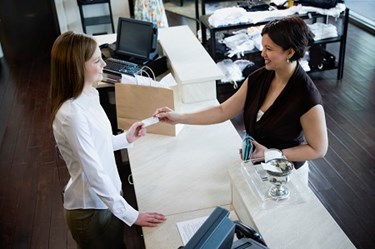The 4 Strategic Pillars Of Shopper-First Retail

By Matthew Eisnor and Armughan Javaid, Vice President, East Region Retail Vertical Co-Leads, SapientRazorfish
A few months ago, The New York Times published a feature story urging retailers to imagine the store of the future. In it, the writer suggested no technology was too advanced and no application too farfetched when it comes to creating tomorrow’s shopping experience.
Robots that use facial recognition software to personally greet customers? Yes, entirely possible. Voice-activated personal assistants available on a customer’s mobile device? Perhaps soon. Trying on clothes via VR-enabled headsets and having purchases delivered via drones? Why not?
Well, for one thing, the customer might not find value in robots that know their name. Perhaps they are intimidated by smart mirrors or annoyed by virtual assistants. Hardly anyone is rolling out the welcome mat for a fleet of drones. Indeed, lost somewhere in the future retail landscape — fascinating and exciting as it may be — is what the customer actually wants.
But to create a better, more valuable, shopping experience for customers, retailers must first understand what their needs and preferences are. To that end, SapientRazorfish and Salesforce have partnered to conduct research revealing new patterns of shopping behavior which helped us identify four crucial rules of shopper-first retail. Here, we examine our key findings and their implications.
- The Evolving Storefront
It wasn’t long ago some industry experts predicted the death of the store. Time has shown us this idea was not only misguided, but baseless. Our research revealed even the youngest and most technologically-savvy customer segment prefers shopping in physical retail stores by nearly 18 percentage points. One-quarter of all buyers (26 percent) reported they had attended in-store events, and of those, 58 percent reported they were more likely to make a purchase from that store in the future.At the same time, our survey showed shoppers are more likely to start their hunt in digital, over other channels, by an almost 2:1 margin. In addition, about 60 percent of customers report using a mobile device in store within the last three months. Additionally, at least at one retailer, half of digital sales involve the physical store, either for in-store pickup or in-store ordering. Thus, integration between channels remains of paramount importance and retailers must consider an extensive restructuring of the business — away from traditional, siloed roles and towards diverse, cross-functional teams built around customer journeys — in order to serve the modern customer.
- Immersive Intelligence
Advances in data science coupled with shopper acceptance of personalization have allowed retailers to connect with shoppers more efficiently and effectively than ever before. In fact, our research surfaced multiple examples of retailers increasing their average order values and overall revenue per visitor by double digits through the use of predictive intelligence on a product detail page.Further, multiple experts we interviewed noted bots, particularly as it relates to customer service chat applications, are primed to greatly reduce the frustration associated with commonly asked questions, status updates, and other frequent requests. Ultimately, these techniques will enable brands to capture micro-moments, as well as create compelling content to drive brand affinity.
- Mobile Is First
Mobile is the most disruptive force in retail since the onset of e-commerce. Our data shows more than half of all e-commerce traffic and nearly one-third of orders come from phones. This, of course, is a remarkable surge from just a decade ago when smart phones, tablets, and other mobile devices were in their infancy. What’s more, 59 percent of all shoppers turn to their phones while in a store. Taken together, we see mobile is actually impacting not simply digital, but the physical store as well — it is clearly the new retail compass, providing direction for shoppers wherever they are.At the same time, our research shows visit dynamics are shifting. While mobile buyers are increasing their visit frequency on phones by 12 percent, those visits are more fleeting as the duration per visit fell a corresponding 12 percent. Thus, while the fundamental behavior we are seeing is that customers are using their phones as an initial point of contact, a robust mobile experience is required to fully convert interest into sales.
- Flattening The Funnel
Just as retailers are reexamining the role of the store, they must also consider how to optimize the digital funnel. Retailers cannot ignore that customer behaviors are shifting to mobile, and thus page load times, interactivity, and ease of purchase through payment are of increasing importance.In addition, social remains an important part of the shopping journey: 47 percent of shoppers used social media to look for a product or service in the last 30 days. And both the number of buyers and browsers over social channels has tripled over the past two years, meaning retailers must continue to expand their presence in order to keep pace with customer behaviors.
For CEOs, CMOs, and other retail executives, this is an important time to reexamine the business and reimagine the future of the industry. To compete against the next wave of digitally-native competitors requires a deep understanding of customer behaviors, a new set of investments, and a new mindset — and yes, maybe even robots.
Our full research report, Shopper-First Retailing: What Consumers Are Telling Us About the Future of Shopping, shares more customer insights and the new trends they’ve inspired. We’ve also developed a retail assessment tool that helps retailers connect the dots across technology, business, and consumer behaviors.
